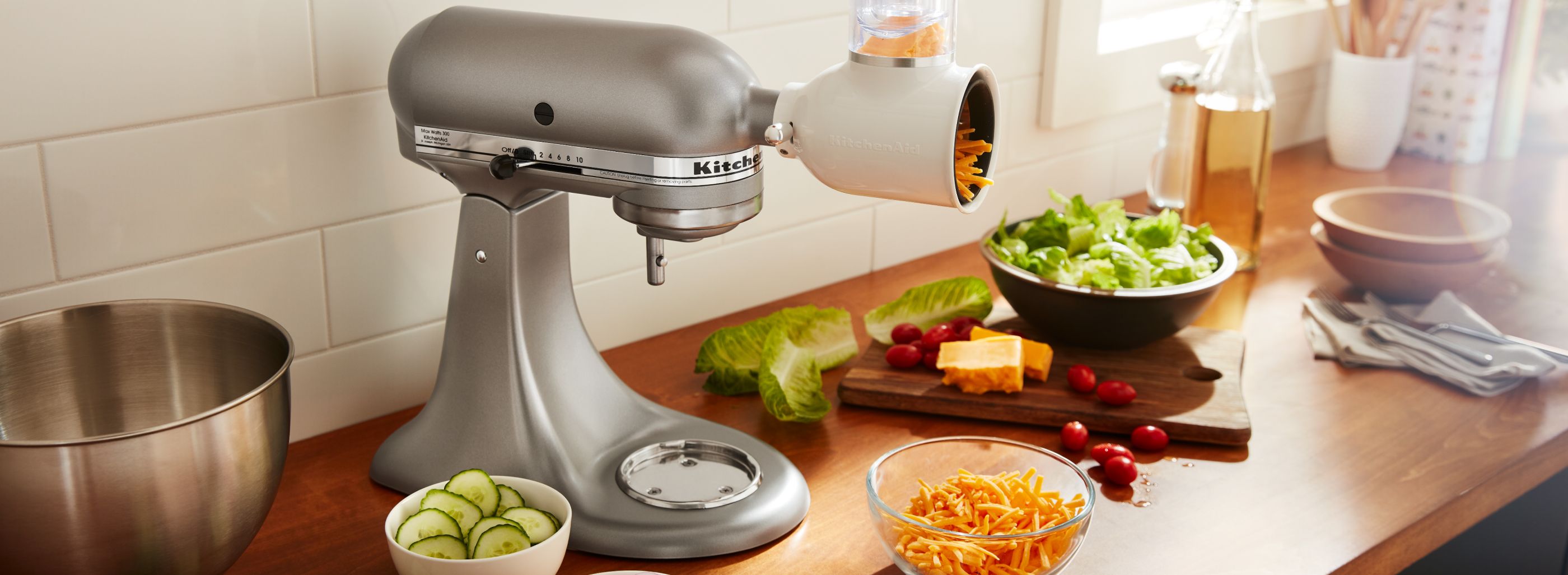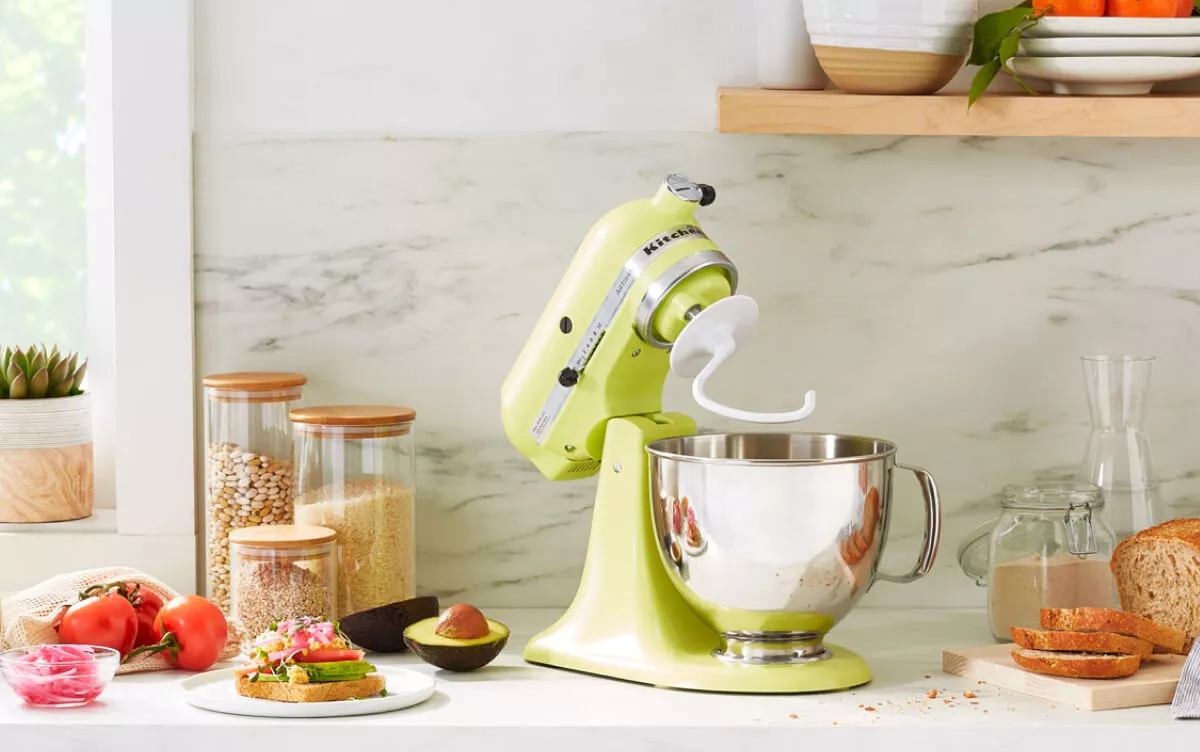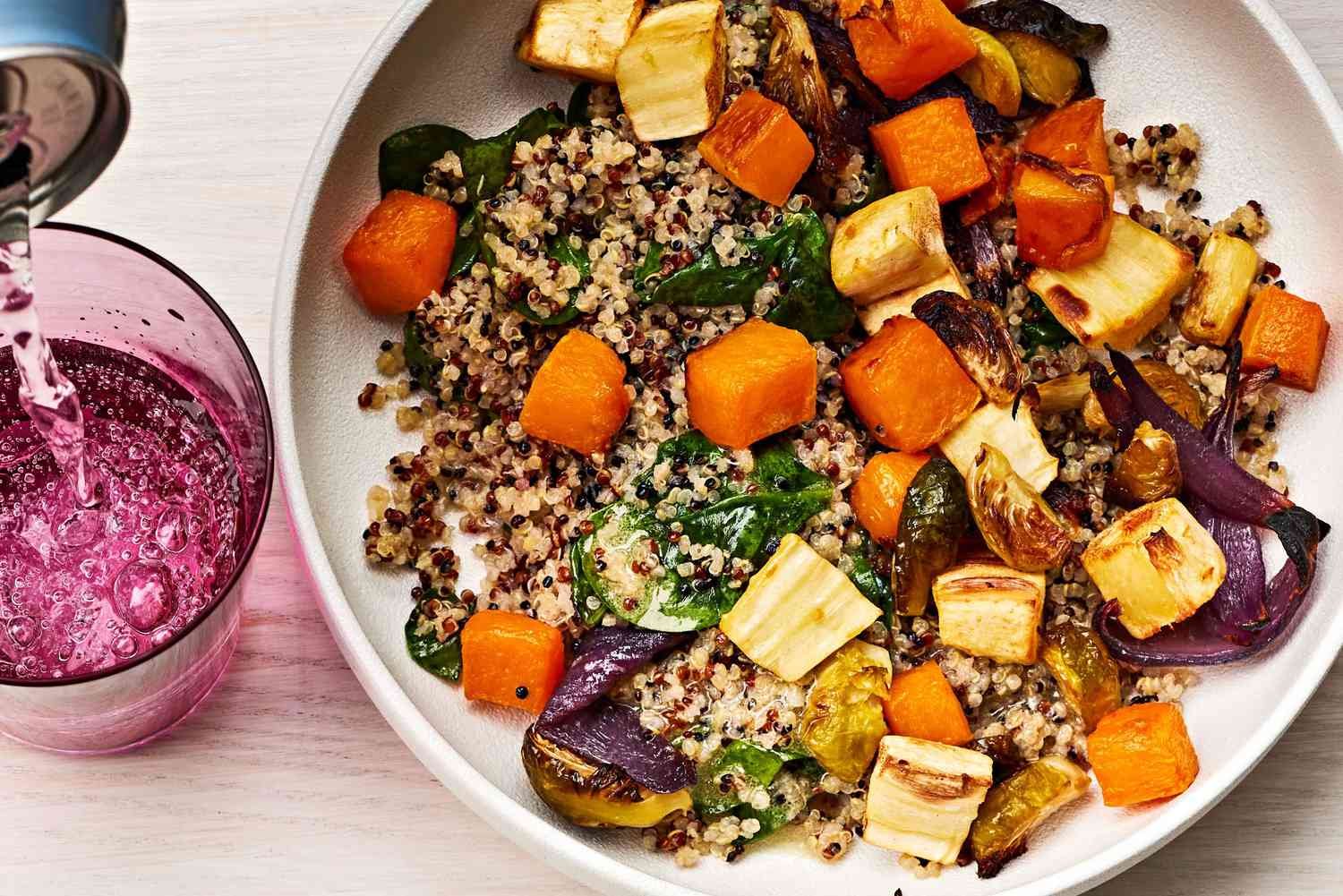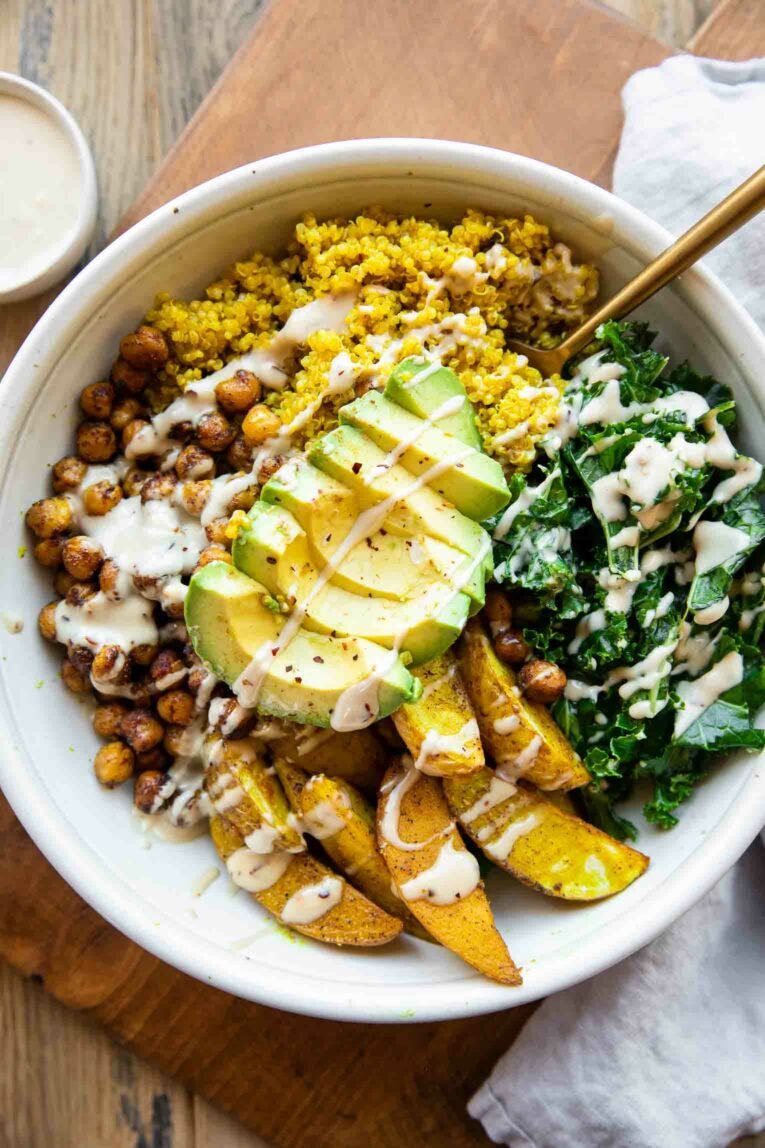KitchenAid mixers are a must-have in many kitchens. They come with different beaters for various tasks.
Understanding the purpose of each beater can improve your cooking and baking. This guide will help you know which beater to use for different recipes. By the end, you’ll be able to choose the right tool for every job. Let’s explore the options and make the most of your KitchenAid mixer.
Introduction To Kitchenaid Beaters
Explore the variety of KitchenAid beaters designed to enhance your mixing experience. From flat beaters for dough to wire whisks for cream, each beater serves a specific purpose. Discover how these attachments can make baking easier and more efficient.
### Introduction to Kitchenaid Beaters Owning a KitchenAid mixer feels like having a trusty sidekick in the kitchen. But to truly unlock its potential, you need to understand its beaters. These attachments are the secret behind flawless cakes, perfect meringues, and so much more. Choosing the right beater can transform your baking experience. Are you using the whisk for your dough? Or the dough hook for your whipped cream? Let’s dive into the fascinating world of KitchenAid beaters and discover their unique roles. ###History And Evolution
Did you know KitchenAid mixers have been around for over a century? They first appeared in the 1910s, changing how people cooked and baked. The beaters we see today are the result of years of innovation. Over the decades, these mixers have evolved, not only in design but also in functionality. The beaters have become more versatile, catering to a wide range of culinary needs. From a single beater to multiple specialized attachments, KitchenAid has continually adapted to meet your baking desires. ###Importance In Baking
Imagine whipping cream with a fork. Exhausting, right? KitchenAid beaters save you time and energy, doing the heavy lifting in seconds. Each beater serves a unique purpose in baking. The flat beater is perfect for mixing cake batters, while the dough hook kneads bread effortlessly. The whisk aerates ingredients, giving your desserts a light, fluffy texture. Your choice of beater can make or break a recipe. Have you ever tried to whip egg whites with a dough hook? It just doesn’t work. Using the right tool ensures your creations come out perfect every time. So, next time you’re in the kitchen, think about which beater will help you best achieve your baking goals.
Credit: www.kitchenaid.com
Flat Beater Explained
The KitchenAid flat beater is a versatile attachment. It’s a staple for many home bakers. This attachment handles a variety of mixing tasks. Its unique design ensures thorough ingredient incorporation. The flat beater is perfect for everyday recipes. Let’s explore its uses and benefits.
Common Uses
The flat beater is great for mixing batters. It makes cookie dough preparation simple. Use it to mix cake batters evenly. It’s also ideal for combining meatloaf ingredients. Mashed potatoes come out smooth with this beater. It handles heavy mixtures without trouble. The flat beater works well with frostings too.
Advantages And Disadvantages
The flat beater offers many advantages. It provides even mixing for most recipes. It’s easy to attach and remove. Cleaning is simple with its smooth surface. The beater is durable and long-lasting. But it has some limitations. It struggles with very stiff doughs. Bread dough might need a different attachment. The flat beater may splash thin liquids. Use caution with high speeds.
Wire Whisk Insights
The wire whisk is a versatile tool for any KitchenAid mixer. It excels at adding air and creating fluffy textures in your recipes. This attachment is perfect for tasks that require light and airy mixtures. Understanding its applications and performance can help enhance your culinary creations.
Ideal Applications
Use the wire whisk for whipping cream to soft peaks. It’s also great for making meringues that are light and airy. Perfect for whisking eggs for fluffy omelets or soufflés. Ideal for mixing light batters like pancakes or waffles. It aerates mixtures, giving them volume and lightness.
Performance Analysis
The wire whisk performs best with liquid ingredients. Its design allows air to incorporate quickly. The whisk’s wires are flexible yet sturdy. It can handle various speeds without bending. Cleaning is simple, thanks to its open design. This attachment provides consistent results every time.

Credit: www.kitchenaid.com
Dough Hook Features
The dough hook is perfect for kneading bread dough in your Kitchenaid mixer. Its spiral shape mixes dough evenly and efficiently. This attachment saves time and effort, ensuring smooth, elastic dough.
Dough Hook Features Kneading dough can be a labor-intensive task, but not when you have the right tool at your disposal. The dough hook for Kitchenaid mixers is designed to make this process effortless. It’s tailored for those who love baking bread, pizza, or any other dough-based delights.Perfect For Kneading
If you’ve ever made bread from scratch, you know how crucial kneading is to the process. The dough hook mimics the action of hand-kneading, ensuring your dough develops the necessary gluten structure for that perfect rise. Do you remember the satisfaction of watching your dough transform from a sticky mess to a smooth ball? With a dough hook, you can achieve this without the elbow grease. It’s not just about ease; it’s about efficiency. The dough hook works quickly, letting you focus on other parts of your recipe. Imagine preparing the toppings for your pizza while the hook does its magic.Comparing Spiral Vs. C-shaped
Choosing between a spiral and a C-shaped dough hook can seem daunting. Each has its own benefits. Spiral hooks are known for their power and efficiency. They handle larger batches of dough with ease, making them perfect for heavy-duty baking days. On the other hand, C-shaped hooks are versatile and work well for smaller batches. They’re great for everyday baking and fit seamlessly into most Kitchenaid models. Which one suits your needs? Consider how often you bake and the quantity you usually prepare. If you’re an avid baker whipping up multiple loaves, the spiral hook might be your best friend. But for casual baking, the C-shaped hook is a trusty tool. How often do you find yourself baking? Your answer might guide you to the right choice.Flex Edge Beater Details
Discover the Flex Edge Beater, a must-have for KitchenAid enthusiasts. This beater scrapes the bowl, ensuring thorough mixing. Perfect for batter and dough, it saves time and effort.
When you think of KitchenAid mixers, the versatile attachments are what truly elevate your culinary game. Among these, the Flex Edge Beater stands out as a handy tool that can significantly enhance your mixing experience. Whether you’re whipping up a batch of cookies or preparing a delicate cake batter, understanding the details of the Flex Edge Beater can make all the difference in your kitchen adventures.Benefits For Mixing
The Flex Edge Beater is a game-changer for anyone who loves baking. Its unique design ensures that you don’t have to stop and scrape the bowl, saving you time and hassle. Imagine mixing a thick brownie batter without having to reach for a spatula every few minutes. This beater also improves ingredient incorporation, ensuring a smooth and consistent mix. Have you ever noticed how some batters or doughs leave unmixed portions at the bottom of the bowl? The Flex Edge Beater minimizes this issue. By maximizing contact with the bowl, it helps ensure every ingredient is thoroughly mixed, reducing the chances of leaving behind flour or sugar clumps.Material And Design
The Flex Edge Beater is crafted from durable materials that promise longevity. Typically made from sturdy metal with a silicone edge, it’s designed to withstand frequent use. This robust construction means you can rely on it for heavy-duty mixing tasks without worrying about wear and tear. Its ergonomic design is not just about aesthetics. The silicone edge is flexible yet firm, allowing it to scrape the sides of the bowl effectively. This design feature saves you from the tedious task of manually scraping down ingredients, making your baking process smoother and more enjoyable. Have you ever found yourself frustrated with a beater that just doesn’t meet your mixing needs? The Flex Edge Beater could be the solution. Its thoughtful design caters to both novice bakers and seasoned chefs, ensuring that every mixing task is efficient and effortless. What baking project will you tackle next with the Flex Edge Beater?Specialty Beaters Overview
When you think of a KitchenAid mixer, you probably envision the classic dough hook or whisk. But did you know that KitchenAid offers a range of specialty beaters that can transform your cooking and baking? These unique attachments open up a world of culinary possibilities, making your mixer a versatile kitchen companion. Let’s dive into some of these specialty beaters and see how they can change the way you cook.
Pasta Roller Attachment
Ever dreamed of making fresh pasta at home? The Pasta Roller Attachment is your ticket to homemade fettuccine and lasagna sheets. This attachment allows you to roll out pasta dough to your desired thickness, creating perfectly even sheets every time.
Using this attachment is straightforward. Simply attach it to the power hub, and you’re ready to go. You can easily adjust the thickness setting to suit your pasta dish, giving you full control over your culinary creation.
Imagine the satisfaction of serving freshly made pasta at your next dinner party. Your guests will be impressed, and you’ll enjoy the taste of authentic homemade pasta. Have you tried making pasta from scratch yet?
Ice Cream Maker Attachment
If you love ice cream, the Ice Cream Maker Attachment is a must-have. This attachment turns your mixer into an ice cream machine, allowing you to churn out delicious homemade frozen treats.
It’s incredibly user-friendly. Just freeze the bowl, attach it to your mixer, and add your ice cream mixture. In about 30 minutes, you’ll have creamy, homemade ice cream ready to enjoy.
You can experiment with flavors and ingredients, creating custom desserts that cater to your taste. Whether it’s classic vanilla or adventurous strawberry basil, the possibilities are endless. What flavor will you try first?
These specialty beaters not only enhance your cooking skills but also bring creativity and fun into your kitchen. Whether you’re making pasta or ice cream, these attachments help you create memorable meals. Are you ready to elevate your kitchen adventures with these innovative tools?
Choosing The Right Beater
Choosing the right beater for your KitchenAid mixer is crucial. It affects the texture and consistency of your recipes. Each beater serves a specific purpose. Understanding these purposes helps you achieve the desired result. Let’s explore how to make the right choice.
Factors To Consider
Consider the type of recipe you’re making. Different recipes require different mixing techniques. Think about the ingredients and their consistency. Heavy doughs need sturdy beaters. Light mixtures need gentle ones. Assess the quantity of food you prepare. Larger batches may require more power. Smaller batches can use lighter beaters. Your mixer model also plays a role. Some models support specific beaters. Check compatibility before purchasing.
Matching Beaters To Recipes
Match your beater to the recipe for best results. Use the flat beater for creaming and mixing. It’s great for cookie doughs and cake batters. Use the wire whip for aerating mixtures. Perfect for whipping cream and meringues. The dough hook is ideal for kneading. Use it for bread and pizza dough. Each beater enhances specific recipes. Understanding their use improves your cooking.

Credit: www.amazon.com
Maintenance And Care Tips
Explore various KitchenAid beaters and learn simple maintenance tips. Keep your appliances in top condition effortlessly. Regular cleaning and proper storage ensure longevity.
Maintaining and caring for your KitchenAid beaters ensures they last longer and perform at their best. You might have noticed your beaters losing their shine or not mixing as well as they used to. By following some simple tips, you can keep them in top condition, making your baking and cooking experiences even more enjoyable.Cleaning Guidelines
Proper cleaning is crucial for your beaters’ longevity. After each use, rinse them immediately to prevent food from drying and sticking. If you’re using a dishwasher, make sure to place them in the top rack to avoid damage from excessive heat. For stubborn residues, soak your beaters in warm soapy water. Use a soft brush to gently scrub away any remaining bits. Avoid using abrasive cleaners or steel wool as they can scratch and damage the finish.Storing Recommendations
Storing your beaters properly can prevent unnecessary wear and tear. Always dry them thoroughly before storing to avoid rust and corrosion. Consider dedicating a drawer or a section in your kitchen for all your KitchenAid attachments to keep them organized and easily accessible. Hanging beaters on a wall-mounted rack not only saves space but also adds a unique touch to your kitchen decor. Alternatively, you can use a small storage bag to keep them together if you have limited space. How do you store your kitchen tools? A little organization can make a big difference in maintaining their quality.Conclusion And Final Thoughts
Choosing the right beater for your KitchenAid mixer can greatly impact your cooking. Each type serves a specific purpose, enhancing your culinary creations. With various options available, understanding each beater’s unique features is essential. This guide helps you make an informed decision, ensuring your mixer meets your needs. Dive into our summary and explore future trends in mixer accessories.
Summary Of Comparisons
The flat beater is versatile. It handles most mixing tasks with ease. Use it for cake batter, cookie dough, and mashed potatoes. The wire whisk is perfect for whipping. Ideal for meringue and whipped cream. The dough hook is designed for kneading. Great for bread and pizza dough. Each beater has a unique role. Consider your cooking habits when choosing. This ensures you have the right tool for the job.
Future Trends
Innovations in kitchen accessories are on the rise. Expect more efficient beaters soon. Companies focus on improving speed and ease of use. New materials may enhance durability. Eco-friendly options are gaining popularity. This aligns with the growing green movement. Stay updated with the latest trends. They can significantly improve your culinary experience. The future of kitchen tools looks promising.
Frequently Asked Questions
What Are The Different Kitchenaid Beaters For?
KitchenAid beaters include flat beaters for mixing, wire whisks for whipping, and dough hooks for kneading. Each serves a unique purpose.
What Are The Different Types Of Hand Mixer Beaters?
Hand mixer beaters come in various types: traditional beaters for general mixing, whisk beaters for whipping, and dough hooks for kneading. Each type serves a specific purpose, ensuring efficient mixing for different recipes. Choose based on your cooking needs for optimal results.
Which Kitchenaid Beater Do I Use For Frosting?
Use the KitchenAid flat beater for frosting. It mixes ingredients evenly, ensuring smooth and creamy frosting. Perfect for cakes and cupcakes.
Are All Kitchenaid Attachments Interchangeable?
Not all KitchenAid attachments are interchangeable. Most attachments fit all stand mixers, but some are model-specific. Always check compatibility.
Conclusion
Choosing the right beater for your Kitchenaid makes a big difference. Each beater has a unique purpose. Use the flat beater for mixing dough or batter. The wire whip is perfect for whipping cream or egg whites. For heavy mixtures, the dough hook works best.
Remember to clean and maintain your beaters well. This ensures they last longer. With the right tools, baking becomes easier and more fun. Happy cooking!






